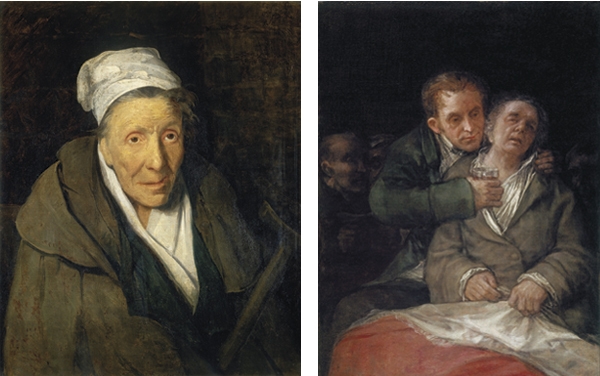It must have been hard to settle on a title for this book; but then this is not the book that Richard Cork originally had in mind. In his introduction to The Healing Presence of Art he describes how he was approached to write on the contemporary role of art in hospitals, but in beginning the research for this he became aware, as he puts it, ‘of the rich, complex and largely overlooked tradition’ to which modern art and medicine are the heirs.
It is this vast hinterland that forms the theme of Cork’s book. It is neither ‘art in hospitals’, nor ‘art and medicine’ nor ‘art as therapy’ but all these things and more. Its subjects range from a Sansepolcro altarpiece and a reliquary in Bruges, through Rembrandt’s ‘Anatomy Lesson’ to Cibber’s Bedlam figures, Jan Steen’s satires, Goya, Hogarth, Van Gogh, Frida Kahlo, José Clemente Orozco in Guadalajara and Chagall in Jerusalem. It deals with art as decoration and description, as spiritual comfort and admonition; art as cure, art as an act of compassion or gratitude, art as an outlet for mental anguish and art created to loosen the purse strings. It encompasses frescos, ceramics and bronzes, swagger portraits, watercolours, stained glass and great architectural projects; it deals with the irony of elaborate decorative schemes for paupers, and with the long and parallel traditions of quackery and medical dedication. Above all, it concerns itself with the compassion and intelligence which have made art the ‘healing presence’ of the title’s claim.
The result is a massive and beautifully illustrated compendium, putting into context images which may have lost all association with their original purpose and re-uniting on the page works geographically blown to the winds. Take, for example, the five surviving portraits in Gericault’s original sequence of ten studies of monomaniacs. Housed now in museums in Ghent, Paris, Lyon, Winterthur and Springfield, Massachusetts, they richly benefit from being seen here together in the wider historical and medical narrative to which they belong. Painted between 1819 and 1824 at the instigation of Dr Etienne-Jean Georget, a pioneer in the study of the insane, the portraits’ extraordinary empathy with the sitters is both a moving testament to the uncertain equilibrium of the artist’s own mind and an acknowledgment of new enlightened attitudes towards mental disorder.
Cork is equally strong on a celebrated painting like Rogier van der Weyden’s ‘Last Judgment’ hanging on the wall of the chapel of the Salle des Pauvres in Beaunes. From their beds, patients could have glimpsed on the chapel wall the tumbling, naked and terrified figures of the damned spontaneously bursting into flames as they plummet into the abyss. Such images would, Cork argues, have been familiar to the invalids. But would it really have been a comfort to them, as he suggests, to think that ‘their own plight entailed less suffering than hell’s victims endured’?
But whether it is Louis XIV’s self-aggrandising Invalides, or Charles II’s Chelsea Hospital, the engaging truth is that Cork is invariably generous with the work in front of him. A deeply human feel for the restorative power of art is, in fact, the great virtue of this study. In discussing the ‘Regentesses of the Amersterdam City Orphanage’, Frans Hals’s chilling group of hard-bitten matriarchs, for example, he quotes John Berger:
The hypocrisy of these women is not that they give while feeling nothing, but that they never admit to the hate now lodged permanently under their black clothes. Each is secretly obsessed with her own hate.
This is too much for Cork, who typically tempers his own interpretation with a nod to human frailty, fallibility and seriousness of purpose.
Cork’s work manages to combine the most recent scholarship with an approach which is never dully academic. He handles both the great set-pieces and intimate portraits — the Isenheim Altarpiece or Goya’s poignant self-portrait with his doctor — with an imaginative feel for both the social and artistic aspects of the works which is profoundly and mutually illuminating.
It cannot, of course, as he acknowledges, cover everything, but it is a compliment to this book that the gaps only leave one wanting to fill them in. I would just throw in two doctor-artists, Sir Charles Bell and Henry Tonks, whose contributions illustrate the advances made in medicine due to the exigencies of war. Tonks’s work on facial wounds during the first world war is well-known, and if the ‘healing presence of art’ has ever achieved a literal meaning it must be in the astonishing series of watercolours that Charles Bell did by way of surgical notes in the aftermath of Waterloo. These, however, and doubtless numerous other artists and institutions, must lie on Richard Cork’s cutting-room floor.






Comments